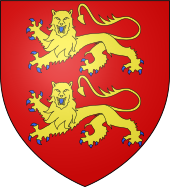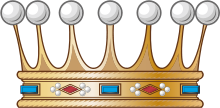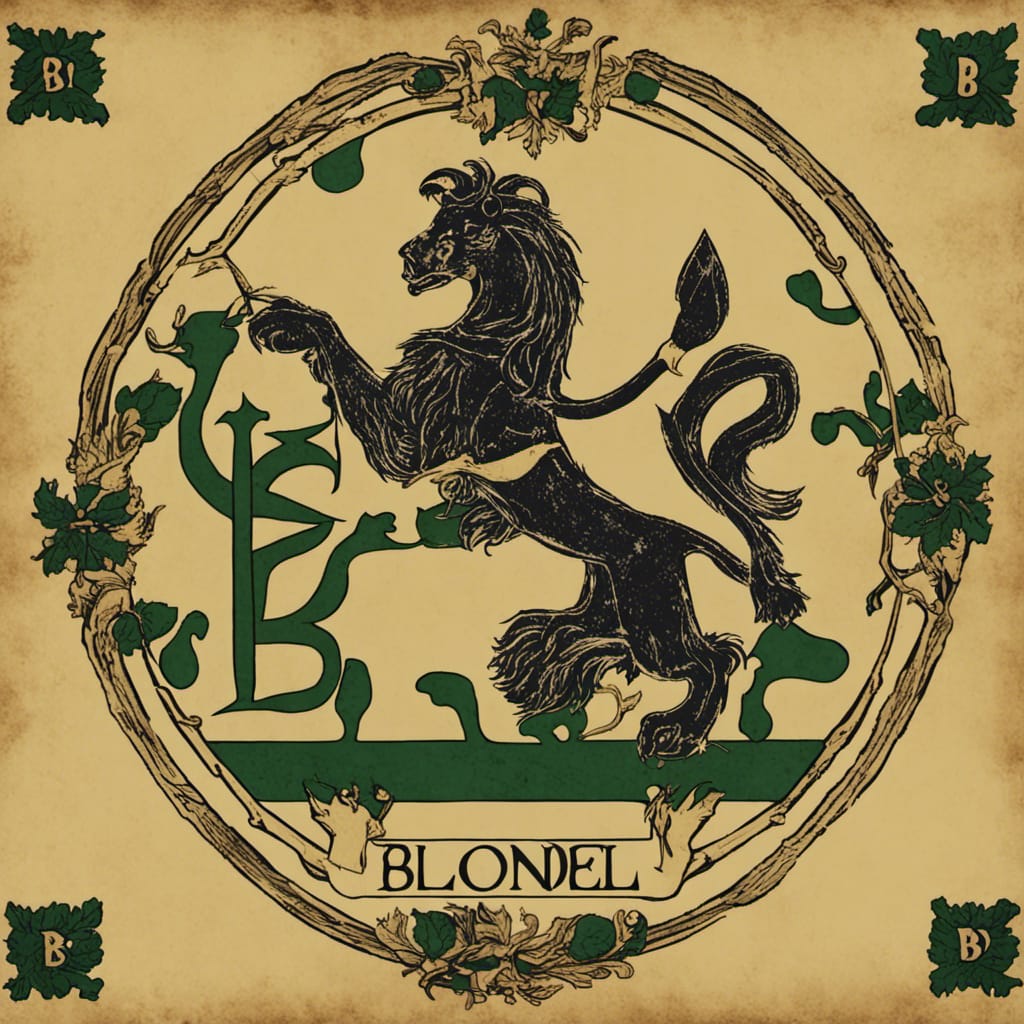


Above is a 1440AD Deed of the private Fief of Blondel and de l'Eperon which is held directly from the crown through court registration and conge/tresieme fees. Seigneurs of Fiefs and Feudal Fiefs
Style of Seigneur - As per the The Feudal Dues (Guernsey) Law, 1980 Style of Seigneur of a fief etc. Section 4. The foregoing provisions of this Law shall be without prejudice –
From the Supplement to the Memorial of the Jersey Reform Committee to the Commissioners apppointed by Her Most Gracious Majesty to enquire into the civil, municipal, and ecclesiastical laws of Jersey and for other purposes, 1859, p. 39. The Jersey upper classes appropriate a Guernsey Order in Council, to ensure they are correctly addressed by the lower orders. ³ In the 17th century in Jersey, 'At the top of the tree were the Squirearchy, the Seigneurs.' Numbers then ranged from 100 to 130, perhaps about 600 including family members. 'They expected to be addressed by the name of their fiefs, Monsieur des Saumarès, Monsieur de Sotel, Monsieur de St Ouen. They spoke of themselves as the Noblesse, for in Jersey as in France, Nobility was considered to begin with the Ecuyer and not as in England with the Baron.' From N.V.L. Rybot, 'Social Life in Jersey in the early 17th century', Bull. Annuel de la Société Jersiaise, 1941 XIV (2), pp. 76 ff. The same applied in Guernsey; Pierre de Beauvoir, for example, was known as 'Monsieur des Granges,' or simply, 'des Granges.' Elie Brevint, Minister of Sark, writing in his Notebook in the first quarter of the 17th century, remarks that 'In Guernsey they give the title of Maître to the Jurats, whoever they are, so they say for example Mre Brehaut, Mre Febvre. In Sark they say honneste homme M. and N. principally when writing.' See: Actes des Etats de l'Ile de Guernesey, Vol. III. Actes des Etats de l'Ile de Jersey, 1524-1700; Société Jersiaise, 1897. Jean Dumaresq was very busy that year: see the Library's Copie d'une proposition faite aux états par Jean Dumaresq, Ésc. Connétable de la paroisse de S. Pierre: et logée au Greffe le 12 Août 1786, touchant le rétablissement des enquêtes dans l'isle de Jersey, en matières civiles, mixtes et criminelles. In 1614, Thomas Le Marchant wished to be called upon to attend Chief Pleas under the title of gentilhomme, 'au rang des gentilhommes,' referring to the preceding case, and appearing to claim right to the title of Gentleman as Seigneur of the fief of Vaugrart.
Seigneurial Courtesy Forms of Address: Examples * Note that because French is still used in the courts and other formalities, these Norman version of the style is still used.
MonSieur John Doe of Blondel
Lord (seigneur) was not necessarily a title. The owner of a lordship, even a commoner, was its lord. The term "lord" meant "the possessor of a certain kind of property" in the feudal system, a mixture of actual real estate and rights over people (rents and fees could be collected from them, certain obligations could be imposed on them, etc). Someone who was only a seigneur was not titled. All FRENCH lordships disappeared when feudalism was abolished in 1789, but the Norman Crown Dependencies of Guernsey, Jersey, and Sark still maintain their Feudal historical culture, customs and styles even today under the Queen and Crown. Viking Styles, Honors and Titles - In Denmark and Norway , the title of Friherre was of equal rank to that of Baron, which has gradually replaced it. It was instituted on 25 May 1671 with Christian V 's Friherre privileges. Today only a few Danish noble families use the title of Friherre and most of those are based in Sweden, where that version of the title is still more commonly used; a Danish Friherre generally is addressed as "Baron". [10] The wife of a Danish or Norwegian Friherre is titled Friherreinde , and the daughters are formally addressed as Baronesse . [8] Freiherr ( German: [ˈfʁaɪˌhɛɐ̯] ; male, abbreviated as Frhr. ), Freifrau ( [ˈfʁaɪˌfʁaʊ] ; his wife, abbreviated as Frfr. , literally "free lord" or "free lady") [1] and Freiin ( [ˈfʁaɪ.ɪn] ; In France, during the Ancien Régime , French baronies were very much like Scottish ones. Feudal landholders were entitled to style themselves baron if they were nobles; a roturier (commoner ) could only be a S eigneur de la baronnie (lord of the barony). These baronies could be sold freely until 1789 when feudal law was abolished. The title of baron was assumed as a titre de courtoisie by many nobles, whether members of the Nobles of the Robe or cadets of Nobles of the Sword who held no title in their own right. In 1815, King Louis XVIII created a new peerage system based on the British model. Baron-peer was the lowest title, but the heirs to pre-1789 barons could remain barons, as could the elder sons of viscount -peers and younger sons of count -peers. This peerage system was abolished in 1848. Seigneur (English: Lord , German: Herr ), was the name formerly given in France to someone who had been granted a fief by the crown, with all its associated rights over person and property. This form of lordship was called seigneurie , the rights that the seigneur was entitled to were called seigneuriage , and the seigneur himself was the seigneur justicier , because he exercised greater or lesser jurisdiction over his fief. Since the repeal of the feudal system on 4 August 1789 in the wake of the French Revolution , this office has no longer existed and the title has only been used for sovereign princes by their families. In pre-republican Germany all the knightly families of the Holy Roman Empire (sometimes distinguished by the prefix von or zu) eventually were recognised as of baronial rank, although Ritter is the literal translation for "knight", and persons who held that title enjoyed a distinct, but lower, rank in Germany's nobility than barons (Freiherren). The wife of a Freiherr (Baron) is called a Freifrau or sometimes Baronin, his daughter Freiin or sometimes Baroness. Families which had always held this status were called Uradel ('primordial/ancient/original nobility'), and were heraldically entitled to a three pointed coronet. Families which had been ennobled at a definite point in time (Briefadel or "nobility by patent") had seven points on their coronet. These families held their fief in vassalage from a suzerain. What is a Free Lord ? The holder of an allodial (i.e., suzerain-free grant direct from crown to holder) barony was thus called a Free Lord, or Freiherr. Subsequently, sovereigns in Germany conferred the title of Freiherr as a rank in the nobility, without implication of allodial or feudal status.
Seigneur (English: Seigneur; Lord) was the name formerly given in France before the Revolution, and in New France and Canada until 1854, to the individual or the collective entity which owned a seigneurie — a form of land tenure — as a fief, with its associated rights over person and property. A seigneur could be an individual, — male or female (seigneuresse), noble or non noble (roturier) — or a collective entity such a religious community, a monastery, a seminary, a college, a parish.
This form of lordship was calledseigneurie, the rights that theseigneurwas entitled to were calledseigneuriage, and theseigneurhimself was theseigneur justicier, because he exercised greater or lesserjurisdictionover his fief. Since the repeal of thefeudal systemon 4 August 1789 in the wake of theFrench Revolution, this office has no longer existed and the title has only been used forsovereignprinces by their families.
In common speech, the term grandseigneur has survived. Today this usually means an elegant, urbane gentleman. Some even use it in a stricter sense to refer to a man whose manners and way of life reflect his noble ancestry and great wealth. In addition, Le Grand Seigneur had long been the name given by the French to the Ottoman sultan. Notre Seigneur Jésus-Christ is the French equivalent of the English Our Lord Jesus Christ. The word seignorage is also derived from seigneur. The word shares the same provenance as the Italian Signore, Portuguese Senhor and Spanish Señor, which in addition to meaning "Mister" were used to signify a feudal lord. Use in Crown dependenciesThe title is still used in the Bailiwick of Guernsey.In particular, it refers to the Seigneurs of Guernsey and the Seigneur of Sark
The traditional native language of Guernsey is Guernesiais (pronounced ‘JEHR-nehz-y-yay’), also known as Guernsey French or 'patois'. However, in the 11th Century Old Norse was the most widely spoken language in Europe. The region was huge and consisted of all the Nordic countries, settlements in Scotland, Ireland, England Wales, Isle of Man, Normandy, Vinland (America) and Volga (Russia) and some places in-between. As a note, William the Conqueror understood the Norse language, and the names Jersey , Guernsey , and Alderney are as truly Norse names as Orkney and Shetland. Norse was actually spoken in parts of the Contentin in North Western France in places like Bayeaux. Norse was spoken and or affected many words and traditions in feudal guernsey.
Nobility of the Norse Modern aristocratic titlesIn the last 300 years, the titles of baron and count, title of marquis in 1709, the following system is the current in Norway or the Norse Nation.
The class of barons and the class of counts were even internally divided. A count would be a titular count (greve), a feudal count (lensgreve) or a national count (riksgreve). Likewise a baron would be a titular baron (friherre), a feudal baron (lensfriherre) or a national baron (riksfriherre). For example, a lensgreve uses the title greve only.
EnglishDatuk Seri George Mentz KSG, Seigneur of Fief Blondel Normandy, has been knighted by Karl von Habsburg (Archduke of Austria, Head of the House of Habsburg) into the OSG Order of St. George or St. Georgs-Orden von Millstatt, Wiener Neustadt, and Carinthia, founded by Emperor Frederick III von Habsburg in 1468 and confirmed by Pope Paul II on January 1st, 1469. The OSG is sometimes referred to as the Ritterorden St. Jörgens, St. Georgs-Ritterorden, or the KSG Knightly Order of St. George. FrenchDatuk Seri George Mentz KSG, Seigneur du Fief Blondel Normandie, a été fait chevalier par Karl von Habsburg (Archiduc d’Autriche, chef de la Maison de Habsbourg) dans l’OSG Ordre de Saint-Georges ou St. Georgs-Orden von Millstatt, Wiener Neustadt, et Carinthie, fondé par l’empereur Frédéric III von Habsburg en 1468 et confirmé par le pape Paul II le 1er janvier 1469. L’OSG est parfois appelé Ritterorden St. Jörgens, St. Georgs-Ritterorden, ou KSG Ordre chevaleresque de Saint-Georges. GermanDatuk Seri George Mentz KSG, Seigneur von Fief Blondel Normandie, wurde von Karl von Habsburg (Erzherzog von Österreich, Oberhaupt des Hauses Habsburg) in den OSG Orden des Heiligen Georg oder St. Georgs-Orden von Millstatt, Wiener Neustadt und Kärnten aufgenommen, der 1468 von Kaiser Friedrich III. von Habsburg gegründet und am 1. Januar 1469 von Papst Paul II. bestätigt wurde. Der OSG wird manchmal als Ritterorden St. Jörgens, St. Georgs-Ritterorden oder der KSG Ritterorden des Heiligen Georg bezeichnet. ItalianDatuk Seri George Mentz KSG, Signore del Feudo Blondel Normandia, è stato nominato cavaliere da Karl von Habsburg (Arciduca d’Austria, Capo della Casa d’Asburgo) nell’OSG Ordine di San Giorgio o St. Georgs-Orden von Millstatt, Wiener Neustadt e Carinzia, fondato dall’Imperatore Federico III von Habsburg nel 1468 e confermato dal Papa Paolo II il 1º gennaio 1469. L’OSG è talvolta chiamato Ritterorden St. Jörgens, St. Georgs-Ritterorden o l’Ordine Cavalleresco di San Giorgio (KSG). EnglishComm'r Mentz holds a noble title of Datuk Seri that is generally equivalent to a Graf or Viscount. In Indonesia, Brunei, and Malaysia, the Datuk Seri is above a Datuk or Dato', making it one of the highest state titles. It doesn't fit neatly into the British system, but if we were to loosely translate, it's like a Viscount, higher than a Baron but not as high as an Earl. FrenchLe Commissaire Mentz détient un titre noble de Datuk Seri, généralement équivalent à un Graf ou un Vicomte. En Indonésie, au Brunei et en Malaisie, le Datuk Seri est au-dessus d'un Datuk ou Dato', ce qui en fait l'un des titres d'État les plus élevés. Il ne correspond pas exactement au système britannique, mais si nous devions traduire librement, ce serait comme un Vicomte, supérieur à un Baron mais inférieur à un Comte. GermanKommissar Mentz trägt einen Adelstitel des Datuk Seri, der im Allgemeinen einem Grafen oder einem Viscount entspricht. In Indonesien, Brunei und Malaysia steht der Datuk Seri über einem Datuk oder Dato' und gehört damit zu den höchsten staatlichen Titeln. Es passt nicht genau in das britische System, aber wenn man es lose übersetzt, ist es vergleichbar mit einem Viscount, höher als ein Baron, aber nicht so hoch wie ein Earl. ItalianIl Commissario Mentz detiene un titolo nobiliare di Datuk Seri, generalmente equivalente a un Graf o a un Visconte. In Indonesia, Brunei e Malesia, il Datuk Seri è superiore a un Datuk o Dato', rendendolo uno dei titoli statali più alti. Non si inserisce perfettamente nel sistema britannico, ma se dovessimo tradurlo liberam | ||||||||||||||||||||||||||||||||||||
Seigneur de la Fief of Blondel Lord Baron Mentz of Fief Blondel Geurnsey Crown Dependency Seigneur Fief of Blondel George Mentz Lord Baron of Fiefdom Blondel Freiherr of Fief Thomas Blondel Feudal Lord of Baronnie - Noble Fief Barony Friherre > Styles and Dignities Seigneurs and Dames Travel Research Lord Paramount Feudal Barons The Seigneur Order Patron George Mentz Charter of Liberties Deed & Title Fief Blondel Islands Viking Kingdom Fief Worship Fiefs of the Islands ECS Extended Continental Shelf Styles and Dignities Territorial Waters Blondel Privy Seal Fief Bouvees of Fief Thomas Blondel Guernsey Court of Chief Pleas Fief Court Arms Motto Flower Fief de l'Eperon La Genouinne Kingdom of West Francia Fief DuQuemin Bouvée Phlipot Pain Bouvée Torquetil Bouvée Bourgeon Bailiwick of Ennerdale Channel Island History Fief Direct from the Crown A Funny Think Happened On the Way to the Fief Guernsey Bailiwick of Guernsey - Crown Dependency Confederation des Iles Anglo-Normandes Sovereignty Papal Bull Research Links Norse Normandy Order of the Genet Order of the Genet Order of the Star Est. 1022 Knights of theThistle of Bourbon Count of Anjou Fief Rights Blondel and King Richard Press Carnival Manorial Incidents Appointments of Seigneurs Store Portelet Beach Roquaine Bay Neustrasia Columbier Dovecote Fief Blondel Merchandise Fief Blondel Beaches Islands Foreshore Events Fiefs For Sale Sold Lords of Normandy Fief Coin Viscounts de Contentin Fief Blondel Map Feudal Guernsey Titles Board of Trustees The Feudal System Hereditaments Chancellor Flag & Arms Fief Videos Guernsey Castle Sark Contact Advowson Site Map Disclaimer Freiherr Livres de perchage Lord Baron Longford Income Tax Guernsey Valliscaulian Order Saint Benedict of the Celestines Society of Divine Compassion Dictionary Count of Mortain Seigneur de Saint-Sauveur Seigneur of Fief Ansquetil Top Success Books Datuk Seri George Mentz Order St. Benedict OSB Celestines Order of the Iron Crown Order of the White Falcon Colonel Mentz Order Red Eagle Order St. Louis Order Holy Ghost Order of Saint Anthony Order of the Black Swan Order of St Columban Order of the Iron Helmet Livonian Brothers of the Sword Fief treizième and Direct from Crown Valuation Fief Blondel Prince of Annaly Teffia
Feudal Lord of the Fief Blondel of the Nordic Channel Islands Guernsey Est.
1179
Feudalherr - Fief Blondel von der Nordischen Insel Guernsey Est. 1179
New York Gazette - Magazine of Wall Street -
George Mentz -
George Mentz - Aspen Commission - Mentz Arms
Counselor George Mentz Esq. - Seigneur Feif BlondelBaron Annaly Baron Moyashel Grants to Delvin About Longford Styles and Dignities The Seigneur Court Barons Fiefs of the Islands Longford Map The Island Lords Market & Fair Fief Worship Channel Island History Fief Blondel Lord Baron Longford Fief Rights Fief Blondel Merchandise Events Blondel and King Richard Fief Coin Feudal Guernsey Titles The Feudal System Flag & Arms Castle Site Map Disclaimer Blondel Myth DictionaryMentz Scholarship Program 101 Million Donation - Order of the Genet Knighthood |





George Mentz Education -
Commissioner George Mentz
-
https://finance.yahoo.com/news/commissioner-george-mentz-clinches-influencer-180000705.html
-
George Mentz News -
George Mentz Net Worth - George Mentz Noble Tilte -
George Mentz -
George Mentz Trump Commissioner -
George Mentz Freiherren Count Baron -
George Mentz Global Economic Forum -
George Mentz Donates Millions